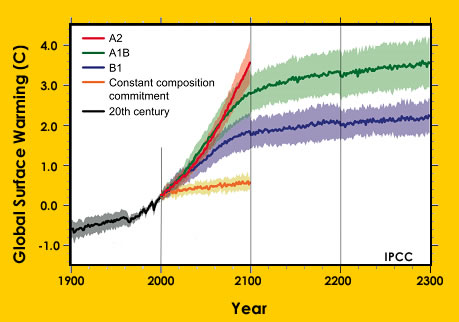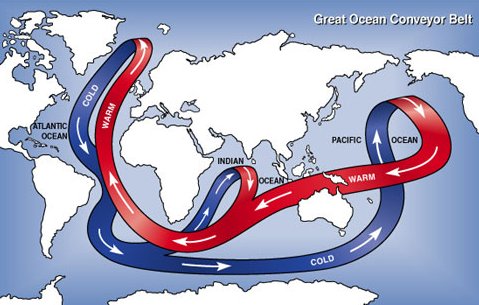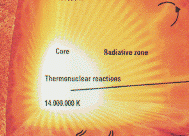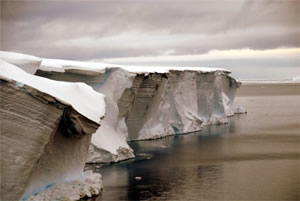This diagram shows the structure of the Sun's interior. Two major regions inside the Sun, the convective zone and the radiative zone, are named for the way heat travels through them.
Click on image for full size
NASA
Thermal Physics
Physics also includes the study of heat and temperature. This study is called thermal physics. It helps us understand global warming, the way we get heat from the Sun or why water in the ocean moves.
To study thermal physics, you need to know about the temperature of things. There are three scales used to measure temperature: Fahrenheit, Celsius
(or Centigrade), and Kelvin. In science, temperatures range a lot - from millions of degrees in
the centers of stars to hundreds of degrees below zero on icy moons.
You also need to know how much heat an object is storing. Heat can flow from one object to another. This flow of heat can melt ice or make changes in our atmosphere that create thunderstorms.
You might also be interested in:

Earth’s climate is getting warmer. During the past 100 years Earth’s average temperature rose about 0.6° Celsius (1.0° F). Things that people are doing like burning fossil fuels, changing the way land
...more
The Sun is very important to the Earth. The Sun warms our planet, heating the surface, the oceans and the atmosphere. The Sun also gives us light. We definitely couldn't live on Earth without the Sun!
...more
The world’s oceans, the Pacific, the Atlantic, the Indian, the Arctic, and the Southern Ocean, have different names, but they are really not that different. Water moves between them all the time. So they
...more
The Kelvin scale is a temperature scale that is often used in astronomy and space science. You are probably more familiar with the Celsius (or Centigrade) scale, which is part of the metric system of measures,
...more
The center of the Sun is called the core. The core is made up of a really hot gas (in the plasma state). The temperature in the core is 15 million kelvins ! That's REALLY HOT! The core is where the energy
...more
Europa was first discovered by Galileo in 1610, making it one of the Galilean Satellites. It is Jupiter's 4th largest moon, 670,900 km ( miles) from Jupiter. Europa's diameter is about half the distance
...more
Frozen water is found in many different places on Earth. Snow blankets the ground at mid and high latitudes during winter. Sea ice and icebergs float in the chilly waters of polar oceans. Ice shelves are
...more















